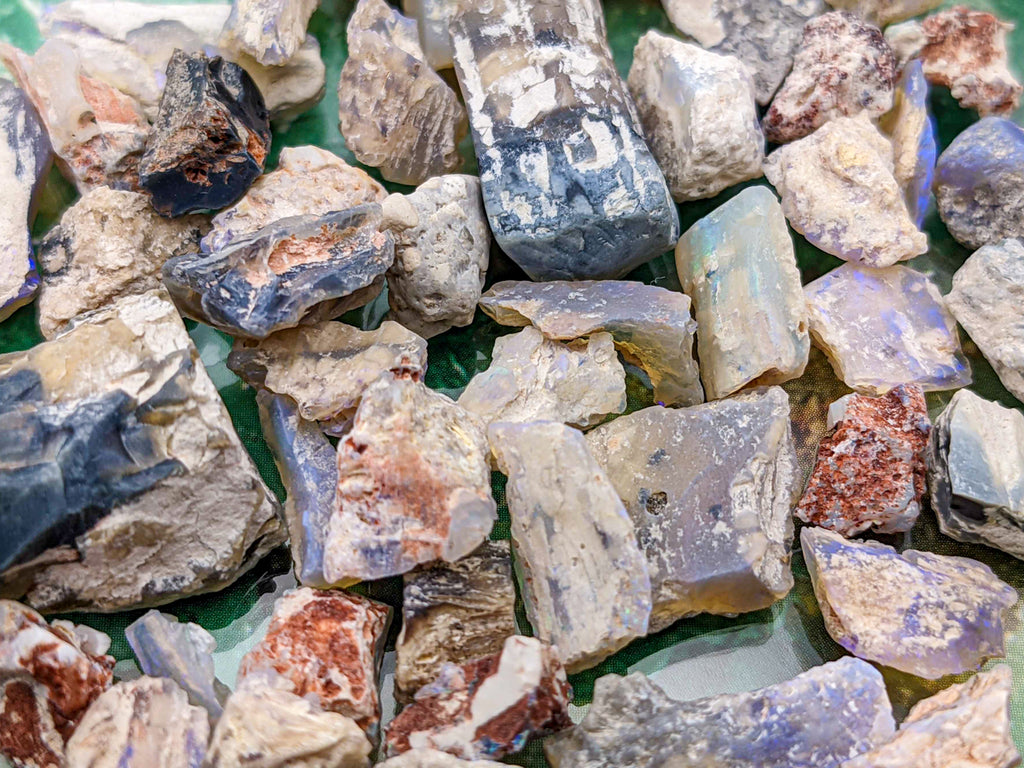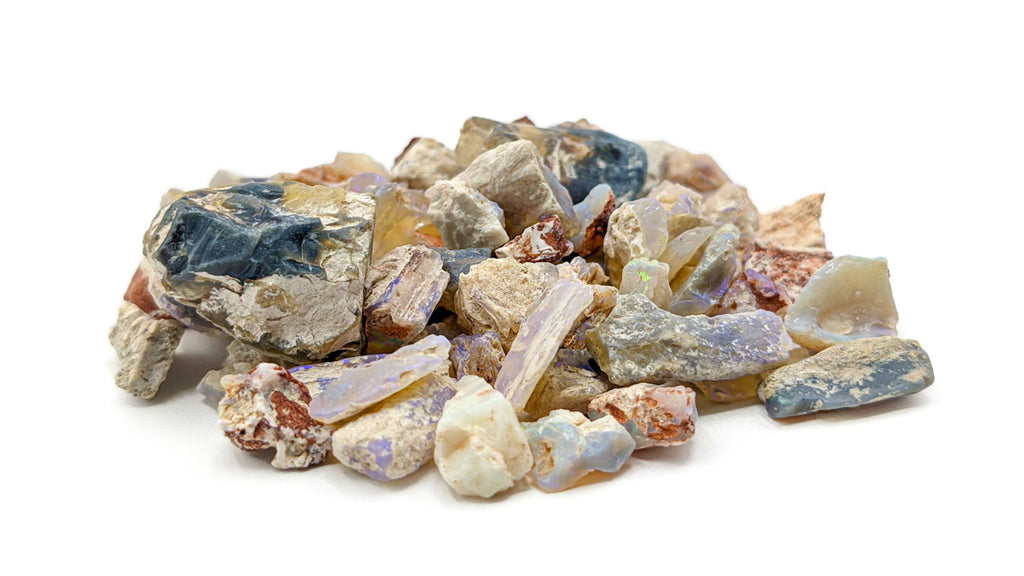Rough Opal





Rough Opal





















Above: Front of the Specimen Card
A gemstone almost alive with an intense inner fire, opals have held the attention of humans for many thousands of years. From Egypt and Classical Greece to China and the Americas, ancient civilizations valued the beauty of opal, but it is only in recent history that we've come to understand the complex nature of this unique gemstone.

Above: Grant holding a Rough Opal specimen.
This specimen is a fragment of rough opalized plant material from Lightning Ridge in NSW, Australia. Australia is the largest producer of opals in the world. The opal fields here date to the Cretaceous when Central Australia was home to an enormous inland sea, known to science as the Eromanga Basin. It dates to roughly 110,000,000 years old.

Above: Rough Opal Specimens
The specimen is housed in an acrylic jar that is encased within a glass-topped riker display box. The box measures 4 1/2" x 3 1/2". A small information card is also included, which serves as the certificate of authenticity.

Please Note: This specimen first appeared in the Third Edition of the Mini Museum (MM3). The single specimens offered here come from the same mine but are much larger. All specimens are completely unique and coloration varies.
More About Opals
"Opals combine brilliant qualities of the most valuable gems and, above all, defy description." ~ Pliny the Elder
 Above: Rough Opals
Above: Rough Opals
Unlike most gemstones, opal does not have a single crystalline lattice structure stretching throughout the material. Rather, opal is a collection of very tiny spheres of silicon-dioxide which are packed together and compressed. Scientists estimate it takes up to five million years to form a single centimeter of natural opal.
The "fire" of opal is the result of diffraction as light passes through the silicon-dioxide sphere within the stone.

As illustrated above, the spheres are aligned in an ordered network that diffracts continually the white light as it passes through each sphere and creates the shifting, brilliant colors we see.

Above: Macro image of an exceptional (and large) rough opal specimen.
Opal forms in areas where water comes in contact with sandstone and filters deep into the Earth, picking up more silica along the way. This silica-rich solution settles into cracks, natural fractures in the rock, or even into fossilized organic material. Under the intense heat and pressure, most of the water evaporates leaving the silica behind.
Above: Hand-carved opal mining tunnel in Lightning Ridge, Australia.
As noted above, this particular specimen is opalized fossil plant material from Lightning Ridge in NSW, Australia. Australia is the largest producer of opal in the world. The opal fields here date to the Cretaceous when Central Australia was home to an enormous inland sea, known to science as the Eromanga Basin (or Sea).
The Eromanga Basin in Central Australia was home to a great inland sea for about 95 million years during the Mesozoic Era. This sea was home to many forms of marine life including Plesiosaurs, Ichthyosaurs, and Ammonites. The deposits in Lightning Ridge date to roughly 110,000,000 years old.
Further Reading
Eckert, Allan W. The World of Opals. John Wiley & Sons, 1997.
Leechman, Frank. The Opal Book.

Above: Back of the Specimen Card
